Canadian Pacific has a network stretching across Canada and into the US, and its significant and continued investment in services for vehicle making customers is expected to bring a fast recovery from last year’s disruption, writes Marcus Williams
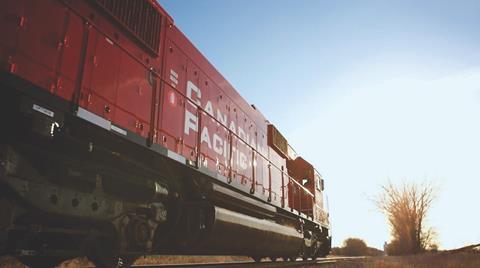
Canadian Pacific railroad (CP), as its name suggests, is well established in the west of Canada, where it has been increasing revenue for vehicle shipments by rail out of the Pacific coast port of Vancouver. In fact, its network stretches 13,000 miles (20,921 km) across Canada and into the US, and the company is now once again developing business on the Atlantic coast. CP is investing C$90m in track infrastructure, which will support finished vehicle traffic coming through Port Saint John , in the eastern province of New Brunswick. It is the first time the company has supported vehicle movements from a Canadian port on the Atlantic coast for 25 years.
That new business adds to CP’s four main areas of service for the automotive sector. The company moves vehicles manufactured in the province of Ontario destined for the US. It also moves vehicles within the US and those coming from the US and western Canada. In addition, it transports vehicles made in Mexico that ship to the US and Canada. And finally, it moves vehicles shipped from overseas that move through the port of Vancouver to eastern Canada. Here, CP is the primary provider of finished vehicle rail services for Glovis Canada and its customer base, including Hyundai and Kia, as well as for Toyota Canada.
Glovis Canada reports a good working relationship with CP and its national manager of vehicle operations, Arnold Kingu, the flexibility the rail company has shown as partner has eased Glovis Canada’s volume transition from its previous rail provider, something that bodes well for a bright future.
“We are intent on working closely with CP in order to implement changes as part of Glovis Canada’s ongoing search for delivery network optimisations,” says Kingu. “We firmly believe some of the changes will turn out to be industry first and industry changing, which is a positive outcome for all parties involved, directly or indirectly. These changes will ultimately affect, in outmost positive manner, Glovis Canada’s pursuit of used vehicle shipments through rail network.” (Read more in the full interview with Arnold Kingu below).
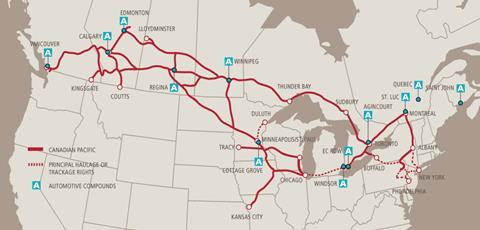
Continued investment
CP deploys almost 4,000 bi-level and tri-level vehicle carrying railcars to move those vehicles, part of the TTX Reload pooling network in North America, of which it is a joint owner with the other major Class 1 railroads in the region.
In 2019, CP moved 114,400 railcar loads of finished vehicles, a 6% increase on the previous year (108,300), and 12% of its automotive revenue came from imported vehicles, compared to 9% in 2018.
That dropped in 2020 to just over 106,000 carloads as global deliveries were hit by manufacturing plant shutdowns in the second quarter of the year caused by Covid-19. Overall automotive freight revenue was down 8% on the previous year, according to the company’s annual report for 2020, and accounted for 4% of CP’s freight revenue in total, equal to C$324m.
However, the company had seen a 9% increase worth C$30m the previous year because of higher volumes shipping from the US to the Vancouver Auto Compound and its continued investment in services for OEM customers is expected to bring a fast recovery. In the first quarter of this year CP achieved record automotive revenue of C$108m, a 19.4% increase on the same quarter in 2020.
In addition to new passenger vehicles, the rail provider transports used cars, machinery and automotive parts.
Compound interest
CP has made a number of strategic investments in vehicle compound infrastructure for customers over the last two years that has put it in a very strong position for automotive trade both in Canada and the US. This in turn is thanks to the fact the company has significant existing property in markets that are key to the automotive industry.
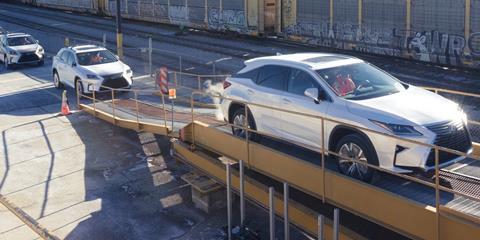
One good example is the aforementioned Vancouver Auto Compound, opened in 2019. That facility has solved two challenges that were facing finished vehicle distribution in the western Canada.
The first problem was that there was limited capacity when it came to distributing finished vehicles to dealerships in the province of British Columbia. Vancouver is Canada’s third-largest city but also Canada’s primary gateway for the import of Asian vehicles for distribution to dealers in the country.
“Capacity and congestion issues persisted as volumes grew and demand for short-sea shipping increased,” says Coby Bullard, vice-president of sales and marketing at CP. “In response, OEMs were metering finished vehicle flows from North American plants and had been asking for additional capacity for years without any solutions forthcoming until we built our compound.”
There was also a problem in the imbalance of finished vehicle railcars to and from Vancouver. Bullard says that in the past it had been impractical to reload the railcars arriving with US and Canada-made cars with imported vehicles for the return trip eastward.
To solve those problems, CP designed and built a 19-acre (7.5 hectare) vehicle compound in collaboration with its OEM customers Ford Motor Company and Stellantis to serve the Vancouver and northern Washington State markets. The company already owned the land on which the compound was to be built, adjacent to its intermodal yard.

“The new compound, which we were able to complete in six months, greatly expanded the region’s capacity for moving vehicles between rail and trucks,” says Bullard. “It also enabled us to operate loaded railcars in both directions, with domestic shipments moving west and imports moving east. This maximises asset utilisation of our rail corridor for the benefit of our network and our customers.”
The compound can handle 36 multi-level auto racks and has nearly 1,200 stalls for vehicles. CP has also deployed a yard logistics system that automates yard processes and supports real-time inventory reporting, to give customers better visibility of their shipments. The system strengthens the company’s damage prevention processes by enabling immediate uploading of inspection images. First introduced in Vancouver, this logistical solution is being rolled out to all CP automotive compounds.
Cross-border footprint
More widely, CP serves 15 automotive compounds in Canada and the US (see table) and its land holdings are key in securing access to car buyers in North America’s major cities.
Canadian Pacific serves 15 automotive compounds in Canada and the US
- Vancouver, British Columbia, CA
- Edmonton, Alberta, CA
- Calgary, Alberta, CA
- Regina, Saskatchewan, CA
- Winnipeg, Manitoba, CA
- Windsor, Ontario, CA
- Scarborough, Ontario, CA (Toronto)
- Wolverton, Ontario, CA (Glovis Canada)
- Montreal, Quebec, CA
- Quebec City, Quebec, CA
- Cote St-Luc, Quebec, CA (Glovis Canada)
- Saint John, New Brunswick, CA
- Cottage Grove, Minnesota, US (Minneapolis/St. Paul)
- Schiller Park, Illinois, US (Chicago)
- Davisville, Rhode Island, US
Its ability to develop a purpose-built vehicle yard in Vancouver was thanks to its historical ownership of property there and that goes for other cities in both Canada and the US. As well as the Vancouver compound, in 2019 CP opened a private vehicle compound for Glovis Canada in Wolverton, Ontario. Then in 2020, CP expanded its existing auto compound in Cottage Grove, Minneapolis to provide capacity for growing customer volumes in the twin cities of Minneapolis–Saint Paul, in the US state of Minnesota.
Again, exclusively for Glovis Canada, CP reopened an automotive compound in Cote St-Luc, in Quebec, near Montreal.
Glovis Canada’s Arnold Kingu says that since the implementation of the Wolverton and Cote St-Luc his company has seen a sustained overall increase of daily shipments of 15%.
“This is quite substantial when we look at the overall yearly numbers,” he says. “In addition, the daily over all shipment increase ensures that our customers dealer network in Ontario and Quebec are serviced with fluidity never matched before.”
The Cote St-Luc opening was followed this year by the opening of another compound south of the border, adjacent to Chicago’s O’Hare Airport, at Schiller Park.
“The rental car centre at O’Hare is the single-biggest market for finished vehicles in North America,” says Bullard. He continues: “Those are examples of recent wins, but CP has similar land holdings in the Toronto and Montreal areas, for example. The story of CP leveraging its land holdings in and near major cities to serve the automotive industry is still in early innings.”
Links to Saint John
As mentioned above, another significant development is the development of track infrastructure for moving finished vehicles out of Port Saint John on the east coast of Canada.

The rail company launched its service to Saint John last year when it bought Central Maine & Quebec Railway (CMQ) in June. That bought the company 480 miles of additional track bringing CP’s network up to 13,000 miles. The network now connects the Pacific and Atlantic coasts.
CP currently receives vehicles manufactured in North America bound for the Atlantic Canada market in Saint John and is preparing for additional capacity and services for imports from overseas.
“CP has invested in its track infrastructure east of Montreal, which is 270 miles shorter than our competitor’s route,” says Ricky Stover, assistant vice-president for sales and marketing, International Intermodal and Automotive at CP. “That’s great for import vehicles coming off the Atlantic, and it also enables us to serve markets in the maritime provinces.”
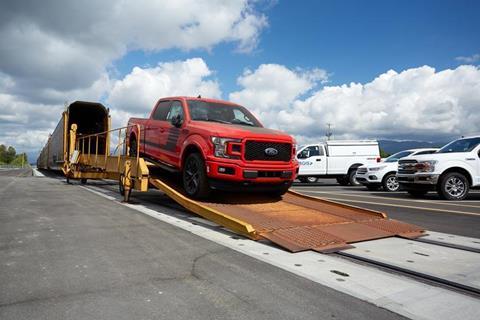
The C$90m ($74.5m) investment being made in the former CMQ property is part of a three-year commitment by CP to upgrade the rail lines serving the port and provide faster links to in land points in Canada and the US compared to what has been available in the past, said Stover.
DP World operates a 25-acre general cargo terminal that is capable of handling finished vehicles but the CP line infrastructure is a separate development covering hundreds of miles of track on the Montreal-Saint John route , supported by New Brunswick Southern Railway.
Stover says the Saint John gateway is competitive with other ports on Canada’s Atlantic coast, including the port of Halifax.
While the rivalry with Canadian National for a partnership with Kansas City Southern may not have reached a clear conclusion as yet, Canadian Pacific is set to continue its strong recovery from last year’s disruption, adding to its track and compound infrastructure and securing new business both in Canada and south of the border.
Teamwork to tackle Covid
“We’ve never faced an event like Covid-19, so there was no playbook to turn to,” says Coby Bullard. “Our primary concerns were protecting our employees, our customers and our communities.”
To do that CP established protocols for its employees, including a 24/7 pandemic hotline they could call if they experienced symptoms or had been exposed. According to Bullard protocols established were highly successful in minimising the spread of the coronavirus through the workplace.
The company recognised the part played by its employees in working through the pandemic and doing so with strict adherence to the health and safety protocols established by the company. At the end of last year it approved a one-time bonus payable to all union employees.
“These railroaders were truly essential in delivering for the North American public during an extremely challenging time,” says Bullard. “The pandemic is not over, and we will continue to exercise caution while delivering for our customers.”
A fluidity never before matched at Glovis Canada
Like most companies, Glovis Canada saw a decrease in vehicle handling in the first half of last year because of the impact of the coronavirus but the first half of 2021 has turned out to be stable volume wise for Glovis Canada’s distribution network and shows a 7.5% increase in volumes over the same period in 2019. Arnold Kingu, national manager of vehicle operations, says the company is optimistic 2021 will continue to see a tangible increase in shipment volumes, including for its used vehicle department. The flexibility in services provided by Canadian Pacific has helped the company bodes well for increases in volumes of both new and used vehicles, as Kingu tells Finished Vehicle Logistics.
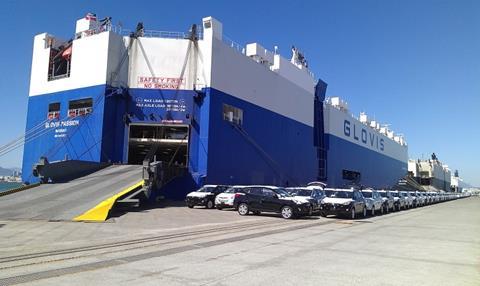
What are the main vehicle models Glovis Canada is handling for sale in the country?
Arnold Kingu: Glovis Canada primarily offers comprehensive logistics services to Hyundai and Kia for finished vehicles. Glovis Canada’s goal is to penetrate the market and eventually provide the same unequalled timely distribution services to other OEMs. Glovis Canada’s use vehicle distribution department is, and will keep, diligently working with used vehicle industry partners to successfully and strategically grow this portion of the business.
From where are these vehicles being delivered?
AK: Glovis Canada’s volumes are from three distinct production zones. Korea-produced finished vehicles arrive from Asia to Vancouver port, then are rail transported to rail compounds all across Canada. US and Mexico-produced finished vehicles are rail transported to rail compounds all across Canada.
Can you tell me about the new compounds that Glovis Canada operates at Wolverton, Ontario and at Cote St-Luc, Quebec?
AK: Glovis Canada’s long-term vision is to become as independent as possible by implementing industry changing venues, as in these cases, with [its] finished vehicle distribution yards operated through partnerships as required.
The KPIs speak for themselves, since implementation of Wolverton and Cote St-Luc, we have seen a sustained overall increase of daily shipments of 15%. This is quite substantial when we look at the overall yearly numbers. In addition, the daily over all shipment increase ensures that our customers dealer network in Ontario and Quebec are serviced with fluidity never matched before.
Can you tell me more about the working relationship Glovis Canada has with Canadian Pacific Railway? I believe CP is the primary provider of finished vehicle services for Glovis in the country.
AK: Glovis Canada’s working relationship with CP, our rail service provider, has been good. CP has shown flexibility which has eased Glovis Canada’s volume transition from previous rail provider to CP. Glovis Canada has a bright vision of the future with current rail service provider CP. We are intent on working closely with CP to implement changes as part of Glovis Canada’s ongoing search for delivery network optimisations. We firmly believe some of the changes will turn out to be industry first and industry changing, which is a positive outcome for all parties involved, directly or indirectly. These changes will ultimately affect, in outmost positive manner, Glovis Canada’s pursuit of used vehicle shipments through rail network.
What have been some of the challenges in dealing with finished vehicle logistics over the last 12 months in Canada and how has Glovis Canada overcome them?
AK: In our specific case, the main challenge was related to dealer closures in the early stages of Covid-19 when the government ordered non-essential service shutdowns. The federal and provincial challenges related to lockdown and essential services were promptly put to rest by members of our team, along with customers, reaching out to respective government bodies in order to have an exception applied, where required, therefore insuring continuity in delivery of finished vehicles. Our distribution network maintained its optimal distribution capacity through this period.
During the months that manufacturing production lines did not affect available shippable volumes in Canada, Glovis Canada was successfully delivering higher volumes in comparison to same months over the past two years. This was mainly made possible due to previously completed analysis and reorganisation of the entire Glovis Canada distribution chain – a task that was meticulously, although arduous, brought to fruition one year prior to the Covid 19 pandemic.
Our customers were very pleased to see Glovis Canada’s fairly newly revamped distribution chain was able to sustain a high-pressure threshold and ensure sustained quality deliveries of finished vehicles. This cemented Glovis Canada’s belief that its newly revamped distribution chain was adequately scrutinised, strategised and implemented.
Glovis Canada is now, as part of continuous growth, looking into used vehicle shipments coast to coast within Canada. We firmly believe that our strong distribution network, combining a solidified rail and truck network, would be a great asset to the used vehicle shipping industry in Canada. Whether it be a single used vehicle or a pool of used vehicles, Glovis Canada will be able to complete moves as efficiently as we do for finished vehicles. We look forward to growing the used vehicle business by servicing dealers, brokers, and used vehicle sales platform companies.





































No comments yet